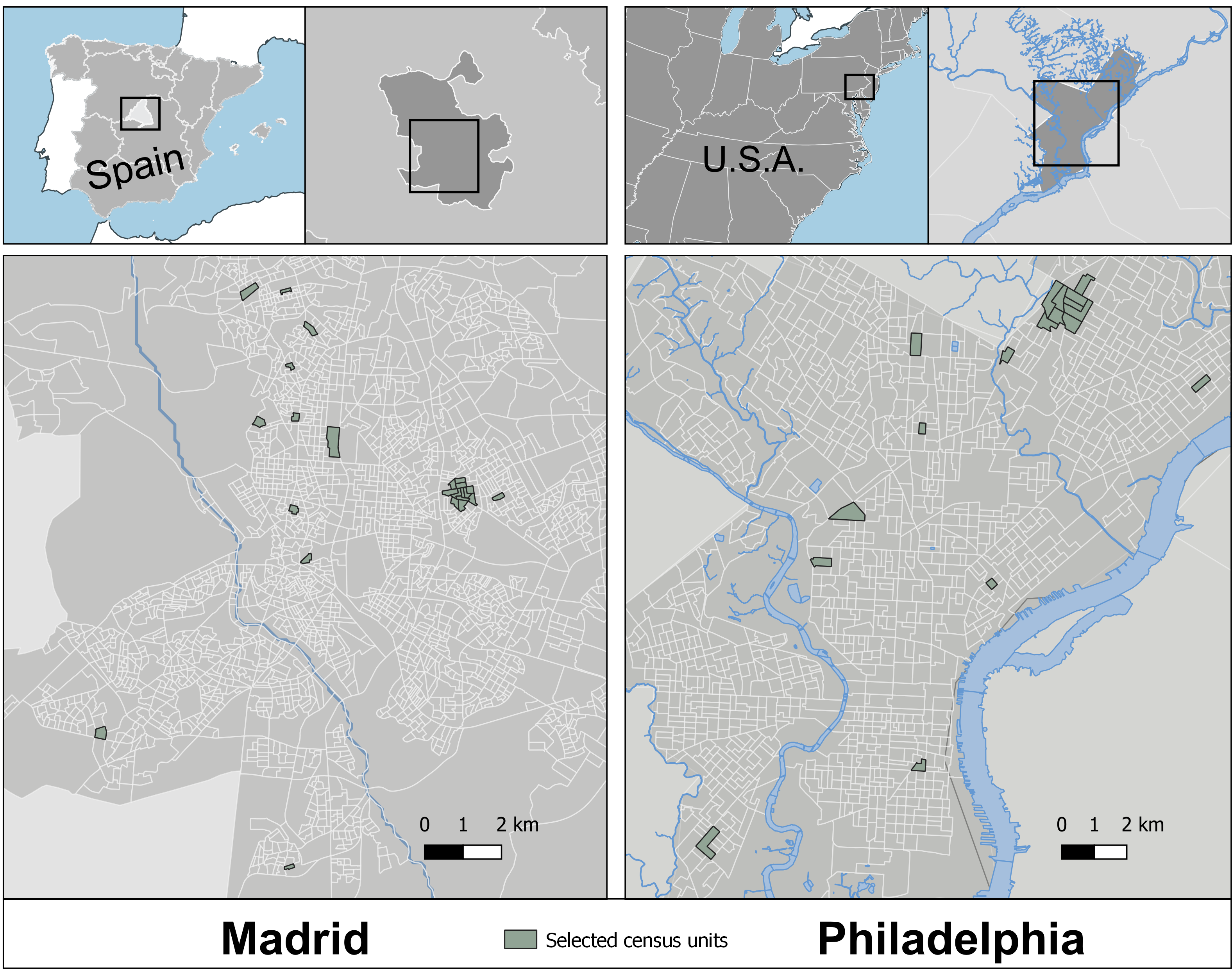City Know-hows

Target audience
City council public health and transport officers
The problem
Urban health studies usually focus on the differences between neighbourhoods in the same city; however, that approach lacks any assessment of the overarching forces affecting the city as a whole.
What we did and why
We compared differences in the walking environment between Madrid and Philadelphia. We used an audit tool called M-SPACES that measures, for each street segment;
Our study’s contribution
We found that Philadelphia’s streets had higher scores for function (physical attributes that supported walking) and safety, while Madrid streets had greater a greater proportion of streets having at least one walking destinations. These results are key to understand which elements of the built environment could be key to uncover mass influences that operate at the city level.
Impacts for city policy and practice
In order to understand which urban characteristics impact on physical activity and health, we need to understand what characterize our cities as a whole. In our study, Madrid is characterized by a higher proportion of daily walking destinations, while the streets of Philadelphia have better physical infrastructure for walking in the street.
Future studies should include attention to the potential impact of built environment characteristics at the city level.
Further information
Authors: Pedro Gullón (@pgullon), Usama Bilal (@usama_bilal), Patricia Sánchez, Julia Díez (@JuliaDiez91), Gina S. Lovasi, and Manuel Franco (@mfranco_uah)
Full research article:
Related posts

How people use energy affects their health, current approaches focus on behavioral change or interventions in the home. This strategy discounts the influence of healthcare. To integrate healthcare into this issue we need to engage with how it is already understood within healthcare and what the challenges are.

Wayfinding interventions offer a viable, low-cost, intervention to increase recreational walking in urban greenspaces for irregular users, older adults and those with mobility impairments.

Our study investigated whether apartment dwelling and building design attributes influenced residents’ housing satisfaction in the initial stages of the COVID-19 pandemic. Multivariate models showed that residents’ perceptions of their apartment’s internal space and layout and the thermal comfort it afforded them in winter were independently associated with increased housing satisfaction.